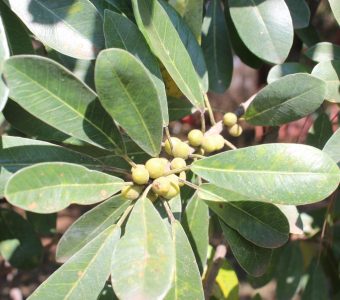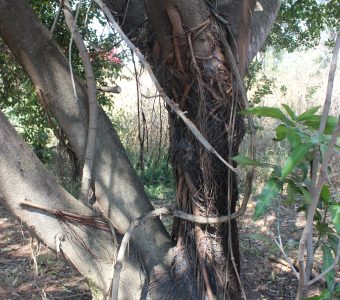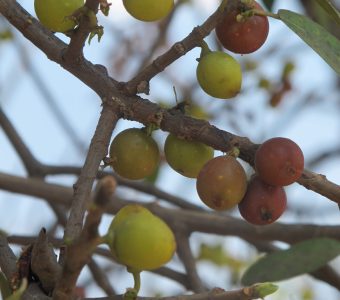


Botanical Name: Ficus burkei (Miq.) Miq.
Synonym: Ficus thonningii (Blume complex C.C. Berg), Ficus rhodesiaca Mildbr. & Burret F. natalensis complex Coates Palgrave 1983
Common Name: Common Wild Fig
Plant Family: Moraceae
Origin: Africa
References: Burrows p.165-172, Coates Palgrave p.138, van Wyk 2 p.159, Venter p.70-71. S.A. No. 48 Zimb. No. 57/1
Description: A medium to large-sized evergreen tree with a spreading growth habit, often with aerial roots. The bark is light grey and generally smooth, becoming rougher with age. Leaves are small (3-12cm), dark green and slightly lighter below. The fruit is a small (5-10mm) green to yellow fig, darkening as it matures.
Features of Particular Interest:
Height and Spread: 10-18m high, 10m spread.
Periods of Interest:
Leaf: All year round.
Fruiting: December to August.
Cultivation
Soil and Moisture: Very soil tolerant, so plant into any suitable site, but keep moist.
Aspect: Grows well in full sun.
Hardiness: Moderately frost and drought tolerant.
Maintenance and Pruning: Fast growing. If planted near buildings the roots will need cutting back periodically.
Propagation: Dry opened fig and then scatter seed, or lightly cover dry fig.
Problems and Drawbacks: Do not plant close to buildings, sewer pipes or swimming pools as the roots are highly invasive – as for most indigenous fig species. Because the young figs ooze latex if broken off, do not plant over fish ponds as the latex clogs fish gills.
Use and Associated Planting: Wonderfully shady tree that attracts masses of birds when in full fruiting. Breaking off leafs or figs releases a strong latex that is used to catch birds.
